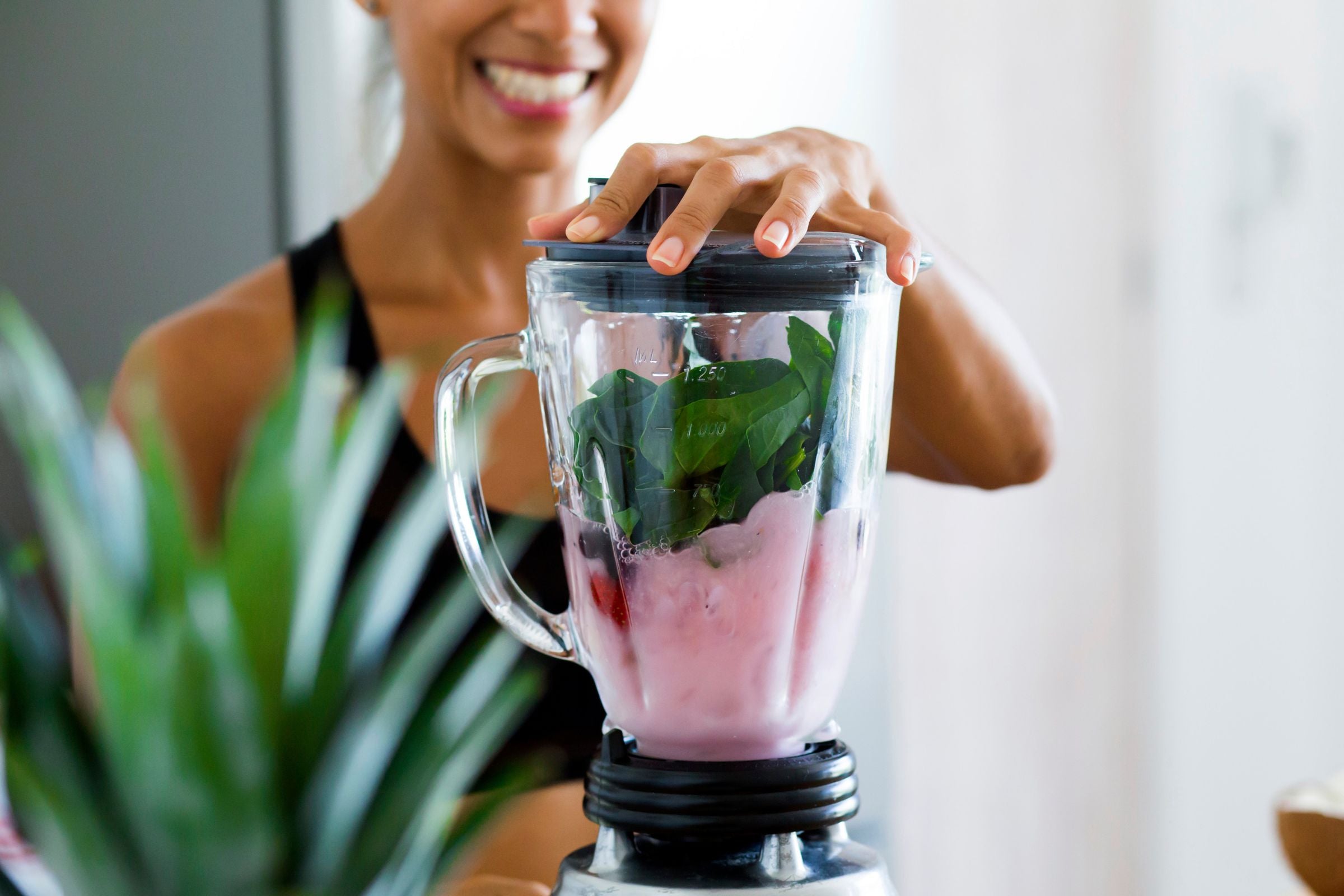No veggies..no problem? Let’s find out
Written by: 100% PURE®
What does healthy mean to you? The health and wellness industry is evolving so rapidly that the idea of being healthy has shifted from a very specific diet and exercise regimen to something much more abstract. The idea of living well and healthy eating is driven much more by how we feel than beliefs and assumptions passed down through our familial and social groups. So now we find ourselves individually redefining wellness and healthy eating on a near daily frequency. Low carb, low fat, high protein - the different options and terminology used to describe all the ways we can feed ourselves is honestly dizzying. Whether we’re following our cravings or following a strictly designed meal plan, none of these “diets” guarantee that we’re getting everything our body needs all of the time.
With that in mind, the idea of healthy eating has always seemed synonymous with eating fresh, vibrant foods in as close to raw form as possible. Though for the most part we’ve swapped salad bars for juiceries and we’ve reconditioned what healthy ‘looks like’ to be something much more inclusive, how do we know for sure if we’re fueling ourselves correctly? For most of us a balanced healthy eating diet includes - or often prioritizes - vegetables, but is it possible to create healthy eating habits that exclude vegetables entirely? While we figure out exactly how we’re getting our nutrition, let’s answer once and for all if healthy eating means we need to be on a permanent first name basis with vegetables.

When we think about the importance that vegetables play for our bodies and in our diets, we should consider two elements. The first factor to consider when talking about vegetables and healthy eating is preventive or corrective dieting. This is where the importance of vegetables comes into play. A great example of this is how we feel after a triple shot of espresso - wired and buzzing - versus how we might feel after Thanksgiving dinner - satisfied but certainly sleepy. In the same way that the makeup and skincare products we use directly influence how our skin looks, a preventive or corrective food regimen is going to dictate how our body feels and functions.
A preventive or corrective type of eating plan is typically more common for middle ages and up, where risk of certain conditions like high cholesterol or diabetes is elevated. And often, a corrective healthy eating diet is designed to limit what our body already has an excess of, while introducing more nutrients that help to balance or optimize bodily function.
It wouldn’t be fair to say that we all approach eating from a health standpoint, however. Another method to consider when talking about healthy eating is intuitive eating, to put it simply. For the majority of us eating tends to be much more intuitive than intentional, with choices based on taste, food availability, and lifestyle. Even so, that doesn’t mean we’re neglecting healthy options. Though, most easily and readily-accessible food options can lack vegetables, when we are able to work vegetables into our meals, usually it’s with the goal of adequately fueling our bodies. Looking closer at food as fuel, let’s see what exactly we’re getting out of vegetables to determine if they’re really something our body absolutely needs.
Newsletter Subscribe
for more blog updates and exclusive discounts
Most of us are at least aware of the different vitamins available in foods. For example, we may have heard that orange juice is a great source of vitamin C, or that bananas are chock full of potassium, but when we stop to think about it those statements don’t really tell us why and how those nutrients could be important.
We know that the body requires food, water, and oxygen to survive but to thrive we also need a balanced intake of minerals, fats, carbs, vitamins and proteins. And while this sounds like a tall order, let’s review some common sources of these nutrients.
Essentially used as necessary fuel for overall bodily function, some common minerals include iron, calcium, sodium, and potassium. While there are certainly vegetable sources for these - think spinach for calcium or avocado for potassium - there are also options to consume these nutrients sans vegetables. Seafood and red meat are the primary food sources of iron, while dairy products are a reliable and tasty source of calcium. And we were able to confirm this same approach when it comes to the body’s required vitamins.
Science shows there are 13 vitamins our body requires for healthy, optimal function, including K and A-E. In skincare vitamin A is the foundation of retinol and responsible for maintaining our youthful skin, but when it comes to our diets vitamin A is also an important antioxidant for immunity, cell repair, and vision. While it’s abundant in leafy greens and root vegetables like carrots or potatoes, we can also find vitamin A in eggs and milk.
With a bit of research what we’ve come to find is that while vegetables are excellent sources of the nutrients our body needs, they’re not the only option when it comes to building balanced healthy eating habits. Below we’ll include a short list of essential nutrients and some of our favorite vegetable and non-vegetable sources, plus a bonus recipe guide to follow that can tempt even the pickiest eaters to consider throwing in a few veggies from time to time.

-
Magnesium | An essential mineral necessary for some of our body’s most important functions, like nerve function and blood sugar, magnesium is easy to get with greens, nuts, beans, and grains, but it can of course be just as well-received in our bodies through a daily multivitamin.
-
Vitamin D | Responsible for supporting bone development and maintenance and even regulating mood, the biggest source of this vitamin is hard to ignore - the sun! - but as far as healthy eating goes, we can obtain this essential vitamin through fish, cheese, and mushrooms.
-
Selenium | Though this is one of the minerals we were less familiar with, selenium plays the important role of making our DNA and helping to protect against cell damage. Broccoli, beans, and peas make great vegetable options to obtain this important mineral, but it is abundant in pantry staples like bread, cereal and seafood.
-
Vitamin E | This antioxidant is critical to healthy skin and blood in both topical applications and a healthy eating diet. Greens, nuts, and pumpkin - perfect for this time of year - make up the best sources of this essential vitamin.
-
Zinc | This mineral is our secret weapon when it comes to fighting colds and viruses as zinc is essential for healing and immunity. Mushrooms and corn make for tasty sources of zinc, as do dairy, grains, and a variety of seafood and meats.
-
Vitamin B | Since many of us love to eat foods rich in carbs, fats, and protein, we rely on B vitamins to help release their energy. As is common with the other nutrients and vitamins we’ve mentioned, leafy greens make an excellent source of this nutrient along with dairy products, seafood, meat, and enriched pantry staples.
Now that we know that vegetables aren’t the only source of our body’s much needed minerals and vitamins, we can all embrace healthy eating in a non-pressurized, guilt-free way. Still, it doesn’t hurt to try and sneak in more vegetables when we can, right? On that note, here are some ways to pack in veggies without compromising cravings or taste.
-
Blend veggies into sauces and soups. Our research showed how valuable leafy greens are to our body’s health, but they’re not always very enjoyable. Blending greens like spinach into pesto sauce, or kale into a berry-packed smoothie bowl, are sneaky ways to trick our palette into enjoying something healthy.
-
Salad has a bad reputation, but they can be much more than leaves in a bowl. Throw in a grain like quinoa and exciting seasonal ingredients, like pumpkin for fall, or fruits in spring, to make salad feel like a creative experience rather than a simple way to get in veggies for the day. Serve them up deconstructed, hot, chilled, or loaded with lots of proteins to make each salad night unique.
-
Most of us enjoy the flavor of grilled and smoky foods, like summer barbecue and wood-fired pizza. Bringing that smoky flavor to our vegetables makes food much more fun. Try grilled corn, roasted peppers, and charred kale with a filling serving of protein and we promise, the flavors will be anything but boring.
- Tags: September-2022
We carefully hand-select products based on strict purity standards, and only recommend products we feel meet this criteria. 100% PURE™ may earn a small commission for products purchased through affiliate links.
The information in this article is for educational use, and not intended to substitute professional medical advice, diagnosis, or treatment and should not be used as such.

